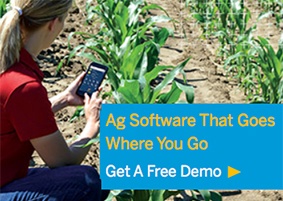 Precision ag and environmental sustainability have always been inextricably linked, according to Dr. Jess Lowenberg-DeBoer, professor of agricultural economics at Purdue University.
Precision ag and environmental sustainability have always been inextricably linked, according to Dr. Jess Lowenberg-DeBoer, professor of agricultural economics at Purdue University.
Lowenberg-DeBoer’s focus on PA began when the Purdue Ag extension office became overwhelmed with queries from growers about whether or not they should be investing in new technologies promoted as precision ag. “There had never been a lot of research money attached to it so we did some work just to be able to respond to them.”
PRECISION AG = ECONOMIC BENEFITS
His discoveries revealed an even larger economic benefit to PA than he imagined. “There are major economic implications of precision ag and it’s not always about making more money on those areas — sometimes it’s about knowing you’re better off bypassing them altogether. And with greater economic analysis, more of that is going on — which is good for the land, too.”
Lowenberg-DeBoer says precision ag as a management practice is following the same adoption trend as no-till farming. The environmental benefits with both are substantial, but it was the reduction of labour costs and equipment wear-and-tear that ultimately pushed growers into no-till. In some regions it was regulated, but adoption was largely driven by economics.
BONUS = ENVIRONMENTAL BENEFITS
“Environmental benefits come with economic savings or regulatory requirements, that’s how it works,” says Lowenberg-DeBoer. “We’ve seen this in Europe, where technologies and practices were adopted because the EU put strict limits on the amount of nitrogen that can be applied to farmland. Growers want to make sure they don’t exceed the limits and get fined, and more precisely they want to make sure the nitrogen they use goes where it needs to go.”
He wonders if more regulation would spur adoption, benefiting both growers and the environment. In terms of adoption of PA, he says North America is “just at the beginning.” Some growers use GPS guidance and auto steer, but other precision ag tools are less common, he notes.
“It can be too complicated and too costly, compared to a scenario where we had good sensors and good algorithms that could relate current nutrient levels with application — and was as easy to use as auto steer,” he says. “This would lead to widespread adoption of precision ag and all the environmental benefits that would bring.”
Barring such governance regulations, the other option is to create technology that is affordable and easy to use that achieves economic as well as environmental benefits.
LARGE-SCALE AG MAKING GREAT GAINS
Corporate farmers often become easy targets for the environmental movement, but these special interest groups may be missing the mark. “All of us in ag have experienced pushback from the environmental community and consumers, but there’s a school of thought that says, the group making the most progress and greatest effort currently is large-scale ag — because of this move into precision management,” he says. “Unfortunately not all of those benefits are well-documented. It would be much better if we had more evidence showing, for example, how much does VR application actually reduce nitrates in groundwater.”
Lowenberg-DeBoer says one advance that would improve overall adoption of PA would be to make the data collection and analysis simpler. “We have to face the fact that most yield monitor data simply doesn’t get used, he says. “It’s too difficult and farmers don’t have the time or skills to do it.”
If there were more automation and less reliance on humans, say via algorithms, the process could be much more streamlined.
At the end of the day, we are are reminded that the American Society of Agronomy defines sustained agriculture as a practice that, ‘over the long term, enhances environmental quality and the resource base in which agriculture depends, provides for basic human food and fiber need, is economically viable, and enhances the quality of life for farmers and the society as a whole.”
Inspiring words for us all!


